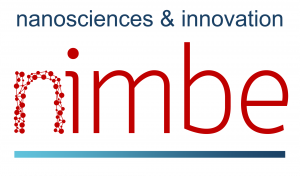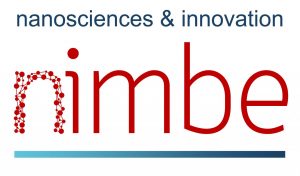Domain, Specialties: CHEMISTRY
Research Unit: NIMBE/LICSEN et LCMCE
Summary
The transfer of hydride (H-) is a crucial step in many chemical transformations, such as hydrogenations or the reduction of CO2 to formic acid and methanol. The hydricity (ΔGH-) of reactive intermediates, that is, their ability to transfer hydrides to substrates, is a key parameter in these reactions and is often intrinsic to the system being studied. Various approaches are used in catalysis to generate hydride intermediates. Thermocatalytic methods favor the use of gaseous dihydrogen, while electrocatalytic pathways rely on the reduction of protons.
At LCMCE, both approaches have enabled the formation of inorganic hydrides (Si–H and B–H bonds),1,2 but at the cost of stoichiometric additives (strong bases) that penalize selectivity and atomic economy. The internship aims to explore the catalytic electroreduction of dihydrogen (HRR) to access the hydride intermediates necessary for the conversion of chlorosilanes to hydrosilanes, bypassing the need for strong bases. The internship will leverage the expertise of LICSEN in the electrodes design, particularly gas diffusion electrodes (GDEs), to develop catalytic materials for the HRR reaction. Platinum, as a reference material, and non-noble metal catalysts will be explored for the electrocatalytic synthesis of hydrosilanes.
During the internship, the student will develop skills in the synthesis and characterization of materials, as well as in electrochemistry for catalytic applications at the materials/molecular interface.
Full description
Objectives:
- Validate the concept on a reference Pt/PTFE GDE: develop a GDE cathode and establish electrochemical conditions for HRR (voltammetry and impedance spectroscopy).
- Explore non-noble metal catalysts (M-N-C; M = Ni, Fe, Cu, Co): synthesis, characterization, and microstructural and physicochemical property optimization to enhance hydricity.
- Establish the potential-hydricity correlation using reference acceptors, for example, BEt3/HBEt3- (ΔGH- ≈ 26 kcal/mol), and identify the electrodes with the best hydride transfer capabilities.
- Use the electrodes from step 3 for the electocatalytic conversion of chlorotrimethylsilane (TMSCl) to trimethylsilane (TMSH) under conditions without additives.
Desired Profile: Master’s student (2nd year) or equivalent (engineer) in the field of materials chemistry. Knowledge in electrochemistry would be appreciated.
Host Laboratory: CEA Paris-Saclay, LCMCE and LICSEN laboratories, 91191 Gif-Sur-Yvette.
The LCMCE and LICSEN are two laboratories of NIMBE, a joint research unit of CEA/CNRS. The LCMCE specializes in the conversion of oxygenated molecules and the synthesis of renewable hydrides. The LICSEN offers expertise in surface functionalization chemistry and nanomaterials, particularly for applications in the energy sector.
Supervision: Mélanie François (LICSEN); Alexis Mifleur (LCMCE)
Application: Send CV + cover letter to and
References :
- ACS Catal. 2021, 11 (17), 10855–10861.
- Angew. Chem. Int. Ed. 2024, 63 (50), e202411468.
- ChemElectroChem 2023, 10, (14), e202300205.
Location
CEA Saclay, (91) Essonne, France
Internship conditions
- Internship duration: 6 months
- Level of study: Bac+5
- Training: Ingenieur/Master
- Continuation in PhD thesis: Yes
- Application deadline: 9 janvier 2026
Experimental skills
Language : English
Links
- Web page of the laboratories: NIMBE/LICSEN and NIMBE/LCMCE
- Web page of the supervisors: Mélanie François et Alexis Mifleur.
Supervisor
Mélanie François
Phone: 01 69 08 90 83
Email :
Alexis Mifleur
Phone: 01 69 08 57 43
Email:




